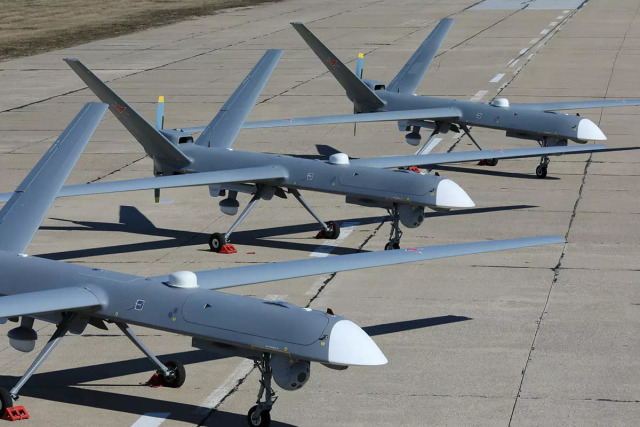As before, we present the opinion of foreign experts on Russia's special military operation in Ukraine. The article "Lessons Learned from the conflict in Ukraine – UAV operations, Options and Trends" presents a look at the development of the military unmanned aerial vehicles (UAVs) industry in Russia and their application during its military operations.
The author is David Saw, an analyst at [i]European Security & Defense.The translation of the article is made with the preservation of the author's style.
Under the heading "Foreign author", the editorial board of IVi tries to represent a wide range of views of foreign military specialists. [IVi's remarks are given in square brackets]
"Lessons learned from the conflict in Ukraine – UAV operations, options and trends"
It has been almost a year since Russia launched what it called its "special military operation", but in fact – the invasion of Ukraine. What was supposed to be a campaign that would last several days and lead to the beheading of the political and military leadership in Kiev, which would lead to the rapid collapse of the Ukrainian resistance, turned into a protracted and complex conflict. Many of the preconceived opinions that existed before February 2022 about the ability of the Armed Forces of Ukraine to resist, the steadfastness of its leadership and the will of the people to support the struggle in Ukraine turned out to be incorrect. Equally, some of the preconceptions about the capabilities, leadership, and doctrine of the Russian army turned out to be just as wrong. In this article, we will look at aspects of the use of UAVs in the current conflict in Ukraine, focusing on the trials and tribulations associated with the capabilities of Russian UAVs.
What has happened in Ukraine since February 2022 is only the latest, but the most intense, bloody and destructive phase of the conflict that began in 2014. At the initial stage of the conflict in 2014/2015, the annexation of Crimea and the war in the Donbas led to the creation of separatist enclaves in Donetsk and Lugansk. At that time, there were many suggestions that Russia had managed to develop a concept of "new generation warfare", combining both conventional and non-traditional operations, and that the Russian army with its battalion tactical groups had developed a new operational structure for conducting maneuver warfare. The innovation was called a game, and, suddenly, the Russian military took the lead in creating what for many can be seen as a new revolution in military affairs.
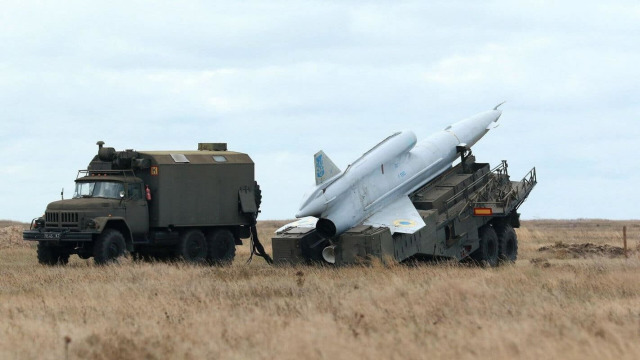
Soviet-made Tu-141 Strizh UAVThe initial phase of the conflict in the Donbas inevitably led to the writing of a number of analyses, one of which, which had a certain impact, was published in the Army in June 2016 and written by Phillip Karber, a military analyst who visited Ukraine several times during the 2014/2015 conflict phase, and Lieutenant Colonel Joshua Thibeault], a system analyst of the US Army Operations Department.
The authors note that "the struggle in Ukraine included the largest battles in Europe since the end of World War II." Before the invasion in February 2022, it was hard not to agree with this statement.
In the article entitled "The War of the new generation of Russia", the authors describe a number of developments related to UAVs. The first of them, in the context of electronic warfare (EW), commenting on the importance of electronic warfare for the Russian army, they classify four key tasks of electronic warfare, one of which is the defeat of UAVs. They note that "electronic warfare is the biggest killer of Ukrainian systems, interfering either with controller signals or GPS signals."
It is important to keep in mind that the APU in 2014/2015 were completely different compared to the APU in 2022. Back in 2014/2015, management remained weak and slow to respond, equipment was of different quality and often limited in quantity, and support services were indifferent. There were some units of the Ukrainian ground forces with good command and better quality, but these were exceptions. It is fair to say that in the initial period of the 2014/2015 conflict, the Armed Forces of Ukraine occupied the second place [in comparison with the Armed Forces of the Russian Federation] both in qualitative and quantitative terms.
About the UAV, the article says: "Ukraine is the first conflict in which unmanned aerial vehicles are present on both sides in significant numbers.Russia uses UAVs for reconnaissance, target detection and destruction in real time during massive artillery attacks and, more recently, as "mini bombs" carrying incendiary explosives aimed at ammunition and fuel depots."
The authors continued: "Ukrainian forces observed up to eight flights of Russian UAVs per day, and the constant awareness that they were being watched and pursued was often a traumatic experience that instilled fear and hindered movement, especially during the day.The combination of small size, limited radar cross-section or infrared signature, and no detection until they are over or fly past the target makes interaction with surface-to-air missiles an unlikely and expensive proposition."
An analysis of these findings, taking into account a retrospective analysis, seems to indicate that the impact of UAVs in terms of both physical and moral aspects in 2014/2015 seems to far outweigh the number of UAVs available to any party at that time. This in itself is an important event.
Lessons from the past
What turned out to be important at the first stage of the war in Ukraine with regard to UAVs was that UAVs with full military specifications were used, but at the same time both sides used commercial/civilian UAVs. Both Ukraine and the separatists in the Donbas modified commercial-class UAVs to increase their capabilities and survivability, and also created new UAVs from commercial/civilian components that they could purchase on the international market.
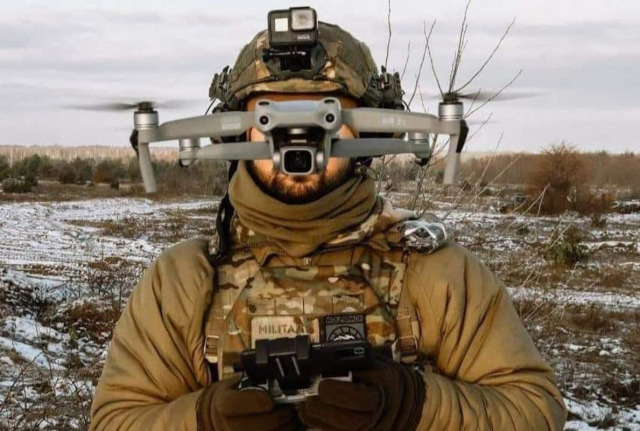
The use of UAVs in Ukraine is not only military systems, here a Ukrainian soldier is shown with a commercial quadcopter. Ukraine will create strike companies using both commercial and military UAVs for both surveillance and attacks.At the beginning of the conflict, Ukraine had very few capabilities in relation to UAVs, there were several available Soviet-era Tupolev platforms, but they could hardly be called modern.
Realizing the importance of UAV capabilities, ordinary Ukrainians gathered together and pooled their resources to purchase civilian UAVs that can be repurposed for military use. This was the first case of UAV crowdfunding. This led to the creation of a company called Shenzhen Da-Jing Innovations (DJI) Technology, based in Shenzhen (Guangdong Province, China) and founded in 2006. It is estimated that by 2021 DJI accounted for 70% of the commercial UAV market. In 2019, DJI acquired a controlling stake in the Swedish camera manufacturer Hasselblad, best known for its professional medium-format cameras, which added high-quality optics to the DJI product line.
In Ukraine, there was a purchase of DJI Phantom drones, and then a ready-made video camera was built in, which led to the creation of very economical UAVs, but their capabilities had significant limitations. The data transmission channel from the operator to the UAV and back was easily detected and subjected to electronic attack. Alternatively, the position of the UAV operator can be detected and subjected to a kinetic reaction. In this case, the typical response will be rapid artillery or mortar fire at the position of the UAV operator, which means that a quick change of position and/or control from a safe and protected location is required for its survival.
One comment, which is often mentioned in the analysis of UAV operations in the conflict in the Donbas after 2015, describes how the Russians tried to use their UAVs. If a Ukrainian position was captured by a Russian UAV of a certain type, within 10-15 minutes this position was hit by an artillery or missile strike. Another Russian tactic was to send two UAVs to a certain area, one at a low level to call fire from Ukrainian positions, and the second Russian UAV at a higher level observed what was happening, and then provided data for artillery guidance to strike at unprotected Ukrainian positions.
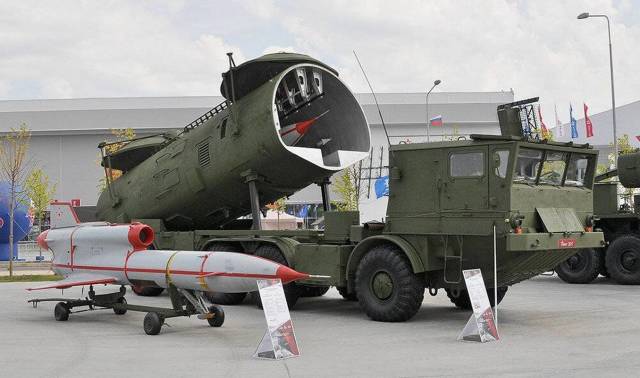
Soviet-made Tu-143 "Flight" UAVDevelopment of Russian potential
There is no doubt that the Russian aerospace industry is capable of designing, developing and producing advanced systems, however, like other parts of the Russian defense ecosystem, it had to face years of underinvestment in the post-Soviet era, which limited its growth and technical development. The era of V. Putin, which began at the end of 1999, was aimed at solving many problems that arose under B.Yeltsin – the power of the central government was restored, a strategy for the future appeared, and the national economy was gradually recovering. As for corruption, it has not disappeared, but has become a tool for the ruling elite to reward themselves and their supporters.
In a broader sense, the underlying ideology of "Putinism" calls for national renewal in Russia and a return to greatness. As part of this process, the Russian government sought to reform its armed forces, as well as to restore to them their perception of "greatness". At the same time, they sought to restore the Russian defense industry so that it would be able to maintain modern military power, and invest in research and development to compensate for the post-Soviet years.
If Russia wanted to dominate the post-Soviet space, it needed a well-equipped, well-organized and well-managed armed forces. The ongoing conflict in Chechnya and the Russian invasion of Georgia in 2008 demonstrated the importance of military and defense-industrial reform. The reform process was aimed at restoring capabilities that had been destroyed for many years, in addition, Russian military thinkers were fascinated by the capabilities of unmanned and autonomous systems, and interest in improved UAVs was seen as an important event.
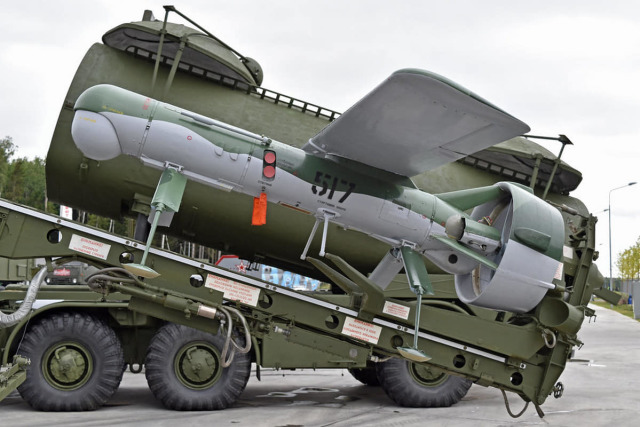
Russian UAV "Bee"In Soviet times, the development of platforms similar to UAVs was inconsistent.
The Tu-141 "Strizh" was commissioned in the late 1970s, and was soon followed by the Tu-143 "Flight". The Tu-143 was equipped with a payload in the form of a reconnaissance capsule, which was removed from the aircraft for processing after the mission. The Soviets used the Tu-143 during the 1982 Lebanon War to support their Syrian ally, and it was a conflict in which Israel used a modern combat UAV for the first time with great success. Undoubtedly, the Soviets knew how useful these Israeli UAVs were, but there was no real reaction to this development. Interestingly, both Tu-141 and Tu-143 are used by Ukraine in the current conflict, mainly as ersatz missiles with explosive loads. In March 2022, a Tu-141, presumably of Ukrainian origin, crashed in Croatia, which veered off course and crashed when it ran out of fuel.
The next generation of Soviet UAVs was the Yakovlev "Bee". It entered service with the Soviet Air Force in the late 1980s, was used for reconnaissance and was equipped with a downlink video link. The problem with these Soviet UAVs was that they were limited compared to what the Israelis or other Western manufacturers were doing, and were increasingly behind the times in terms of capabilities.
In the post-Soviet era, interest in UAVs was present, and the ability to develop and implement reliable solutions for Russian UAVs was absent. Moreover, they came to the conclusion that UAVs can offer much more than just combat equipment. If you look at Russia, the size of its borders is huge, they would be a great mission for surveillance by UAVs. In addition, UAVs could be used to monitor pipelines and power lines, to manage emergency situations and provide assistance in the event of natural disasters. All this has given rise to expectations that Russia should have an effective UAV capability of its own.
To be continued…The materials of the article contain exclusively author's estimates and do not reflect the position of the editorial board of IVi
According to the materials of the resource euro-sd.com
